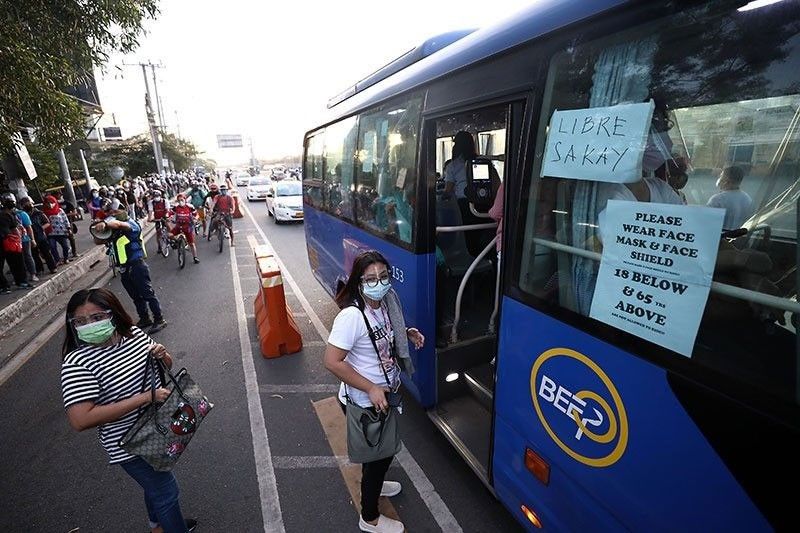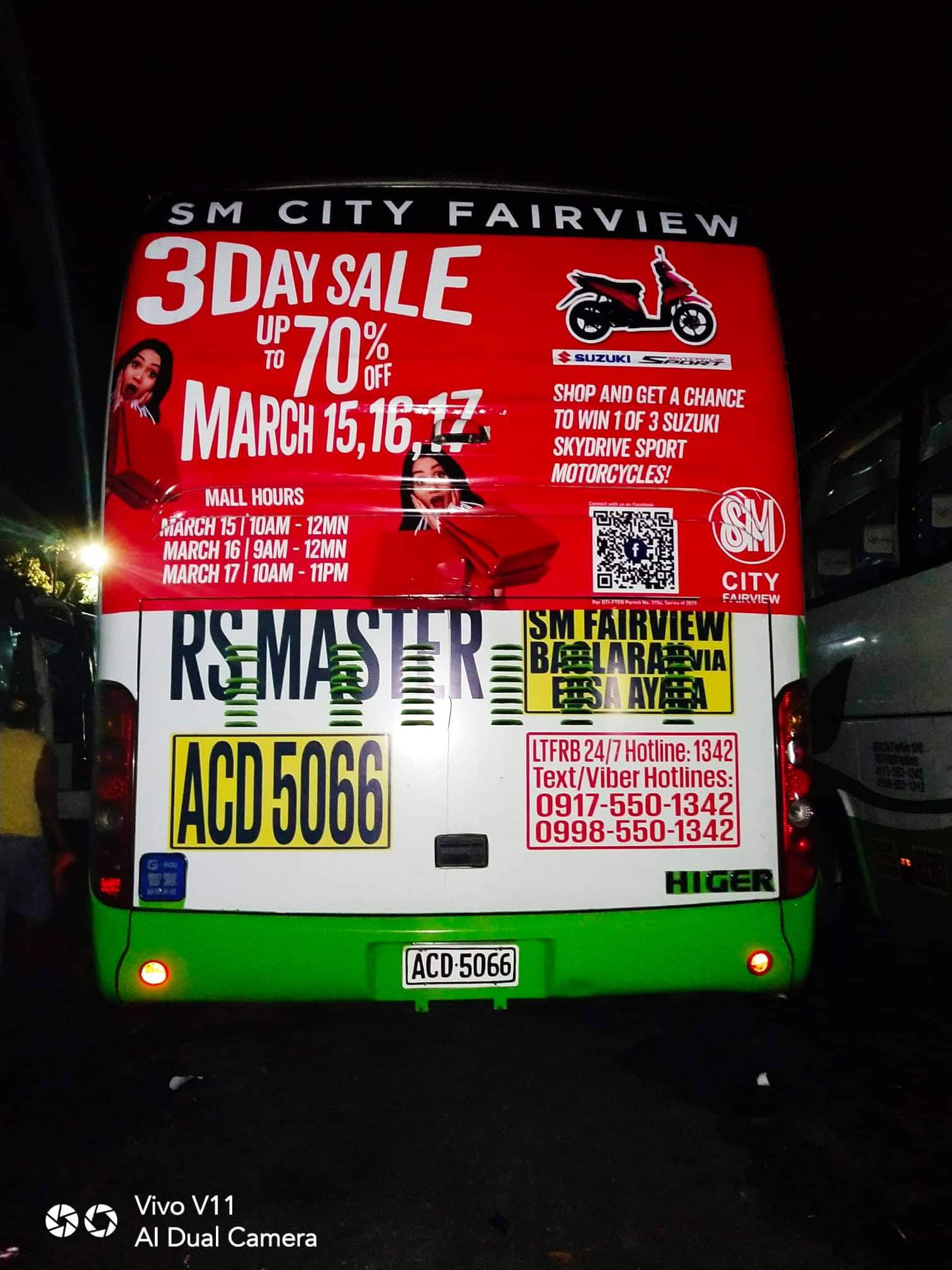Why Select Transit Advertising Philippines for Your Brand
Why Select Transit Advertising Philippines for Your Brand
Blog Article
Understanding the Function of Transit Advertising in Enhancing Brand Presence and Consumer Involvement
Transportation marketing has emerged as a pivotal element in the advertising landscape, offering special possibilities for brand names to elevate their exposure and involve consumers successfully. With the ability to get to a diverse and captive target market throughout their everyday commutes, these advertising strategies are not just regarding presence; they are about creating significant connections with potential customers. As we discover the diverse benefits and ingenious methods within transportation marketing, it comes to be crucial to think about exactly how these elements jointly influence consumer perception and behavior, questioning regarding their lasting effect on brand loyalty.
Meaning of Transit Advertising
Transportation marketing describes the method of advertising items, services, or brand names with advertisements positioned around mass transit systems. This form of advertising encompasses a variety of placements, including posters on trains and buses, electronic screens at transit stations, and covers on the outside of lorries. It aims to get to a varied audience, capitalizing on the high foot traffic connected with public transportation.
Transit advertising and marketing is tactically positioned to capture the attention of commuters, who often invest substantial time waiting or traveling. By integrating ads right into the everyday routines of individuals, brands can create a long lasting perception and foster brand name recognition. The medium is particularly reliable in metropolitan atmospheres, where public transport is a primary setting of travel.
Furthermore, transit advertising and marketing can promote localized targeting, enabling organizations to get to certain demographics based on transportation courses and station areas. As city populaces expand and using public transport boosts, this marketing technique has gotten prestige as an important element of integrated advertising techniques. The dynamic nature of transportation advertising and marketing, incorporated with its capacity to engage consumers in a captive atmosphere, highlights its relevance in modern advertising practices.
Benefits of Transportation Marketing
The efficiency of transportation marketing hinges on its capacity to provide a multitude of benefits to brands seeking to boost visibility and involvement. Among the main benefits is the substantial reach it provides; transit advertisements can successfully target varied demographics throughout metropolitan locations, reaching both pedestrians and travelers alike. This broad exposure substantially increases brand awareness.
An additional benefit is the high frequency of perceptions. As transportation lorries take a trip along well established paths and quit at multiple locations, they create repeated exposure that enhances brand messages. This frequency fosters experience, which is vital in customer decision-making.
Transportation marketing is likewise economical compared to various other media platforms. Given its expansive reach and possibility for high impacts, brands often experience a reduced expense per thousand impacts (CPM), optimizing their advertising spending plan.
In addition, transit ads can produce a feeling of community connection. By straightening with neighborhood transportation systems, brand names can reverberate with local audiences and foster a sense of neighborhood satisfaction. This local technique improves brand name loyalty and involvement, making transportation marketing an engaging selection for companies intending to solidify their presence on the market.

Effective Approaches for Transit Campaigns
To maximize the impact of transportation campaigns, brand names should utilize tactical planning and execution tailored to their target market. First, determining the group attributes of the audience making use of public transit Read Full Article is vital. This allows brands to create personalized messaging that resonates with potential clients.
Next, picking the ideal transportation tools is important. Whether using bus covers, metro posters, or digital screens, each medium has unique advantages that can enhance exposure. For instance, dynamic visuals on bus covers can stand out, while digital ads can be upgraded frequently to reflect timely promos.
Additionally, integrating a cohesive branding technique across transit platforms ensures consistency and strengthens the brand's identification. Making use of appealing designs and memorable taglines will enhance brand name recall among commuters.
By utilizing these approaches, brands can properly harness the possibility of transit advertising, fostering greater awareness and connection with their target audience. Inevitably, a well-executed transit project can drive substantial growth in brand exposure and consumer involvement.

Gauging Effect and Engagement
In examining the efficiency of transportation ad campaign, accurate measurement of impact and interaction is necessary for brand names seeking to maximize their marketing techniques. Metrics such as reach, regularity, and impressions supply foundational information to analyze visibility. Assessing these aspects helps figure out the number of possible customers are revealed to the promotions throughout their daily commutes.
Engagement can be further evaluated via customer interactions, such as website traffic, social media sites points out, and straight feedbacks to calls-to-action included in the ads. Using devices like QR codes or distinct Links can help with tracking of consumer actions directly linked to transit campaigns. Surveys and comments systems additionally function as beneficial approaches to gather qualitative data on customer assumptions and recall of the ad.
In addition, advanced analytics and acknowledgment versions can correlate transit direct exposure with succeeding getting habits, using insights right into the return on financial investment. By using a comprehensive strategy that integrates quantitative and qualitative steps, brands can establish a nuanced understanding of their transit advertising impact. Ultimately, this data-driven approach enables brand names to refine their projects, guaranteeing they resonate effectively with target market and enhance general brand name exposure.
Situation Researches of Successful Campaigns
Effective transit marketing campaign function as engaging instances of just how efficient methods published here can elevate brand presence and involvement. Transit Advertising Philippines. One remarkable situation is the "I Love New york city" project, which changed the city's image and attracted numerous tourists. By utilizing metro ads, billboards, and bus covers, the campaign created a solid, natural brand identity, leading to a substantial uptick in tourism and local business patronage
One more excellent campaign is Coca-Cola's "Share a Coke" initiative, which leveraged transportation marketing to personalize the brand experience. By including prominent names on advertising products throughout numerous transit systems, Coca-Cola cultivated a much deeper emotional link with consumers, motivating them to share their experiences on social networks.
In addition, the "Got Milk?" campaign effectively used public transport ads to get to a broad target market, strengthening the message of the importance of milk in a balanced diet. The project saw a quantifiable rise in milk consumption in target demographics.
These instance studies highlight that when carried out attentively, transit advertising and marketing can considerably boost brand name visibility, foster customer engagement, and drive measurable outcomes, showing its crucial duty in modern marketing approaches. - Transit Advertising Philippines
Verdict
In final thought, transit marketing serves as a crucial tool for boosting brand name presence and fostering customer involvement. Eventually, the capability to gauge engagement and examine effective instance researches underscores the efficiency of transportation advertising and marketing in driving brand commitment and consumer interactions.
Transit marketing has actually arised as a pivotal aspect in the advertising and marketing landscape, using one-of-a-kind possibilities for brand names to elevate their presence and involve customers successfully.Additionally, transit advertising and marketing can facilitate local targeting, permitting businesses to get to specific demographics based on transit routes and station locations.In reviewing the efficiency of transportation marketing campaigns, accurate dimension of effect and engagement is important for brands seeking to enhance their marketing methods.Successful transit advertising and marketing projects top article serve as engaging instances of exactly how effective techniques can boost brand exposure and involvement.In conclusion, transportation marketing offers as an essential tool for boosting brand presence and cultivating consumer interaction.
Report this page